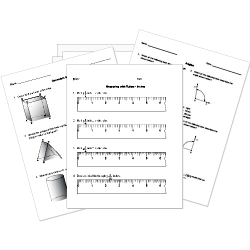How to Calculate a Molar Mass
How to Calculate a Molar Mass
This lesson aligns with NGSS PS1.B
Introduction
In the world of chemistry, one of the fundamental concepts that plays a crucial role in understanding and quantifying substances is molar mass. Molar mass is the mass of one mole of a given substance and is expressed in grams per mole (g/mol). In this article, we will delve into the systematic process of calculating molar mass, providing step-by-step guidance along with illustrative examples to enhance your understanding.
Understanding Molar Mass:
Molar mass serves as a bridge between the microscopic realm of individual atoms and molecules and the macroscopic levels that we can observe and measure. It is a key parameter in various calculations, helping us to work with measurable quantities and facilitating an in-depth analysis of chemical reactions.
Step-by-Step Guide to Calculating Molar Mass:
Step 1: Gather Molecular Information
Before delving into molar mass calculations, it's essential to gather information about the molecular or elemental composition of the substance in question. For molecular compounds, identify the number and types of atoms present in a molecule. For elements, note their atomic symbols and masses.
Step 2: Identify Atomic Masses
The atomic mass of an element can be found on the periodic table. It represents the average mass of an atom of that element relative to the mass of a carbon-12 atom, which is assigned a mass of exactly 12 atomic mass units (u).
Step 3: Count the Atoms
For molecular compounds, count the number of atoms of each element in a single molecule. This information is often represented by a chemical formula. If the formula is H₂O, for instance, there are two hydrogen (H) atoms and one oxygen (O) atom.
Step 4: Multiply Atomic Mass by the Number of Atoms
Multiply the atomic mass of each element by the number of atoms of that element in the molecule. This provides the contribution of each element to the total molar mass. Repeat this process for all elements in the compound.
Step 5: Sum the Contributions
Sum up the contributions from each element to obtain the molar mass of the entire compound. The result will be expressed in grams per mole (g/mol).
Example 1: Calculating Molar Mass of Water (H₂O)
Gather Information:
- Chemical Formula: H₂O
- Atomic Mass of Hydrogen (H): 1.01 u
- Atomic Mass of Oxygen (O): 16.00 u
Count Atoms:
- Hydrogen (H): 2 atoms
- Oxygen (O): 1 atom
Multiply and Sum:
- Molar Mass = (2 * 1.01 u) + (1 * 16.00 u)
- Molar Mass of Water = 2.02 u + 16.00 u = 18.02 g/mol
Example 2: Calculating Molar Mass of Carbon Dioxide (CO₂)
Gather Information:
- Chemical Formula: CO₂
- Atomic Mass of Carbon (C): 12.01 u
- Atomic Mass of Oxygen (O): 16.00 u
Count Atoms:
- Carbon (C): 1 atom
- Oxygen (O): 2 atoms
Multiply and Sum:
- Molar Mass = (1 * 12.01 u) + (2 * 16.00 u)
- Molar Mass of Carbon Dioxide = 12.01 u + 32.00 u = 44.01 g/mol
Example 3: Calculating Molar Mass of Methane (CH₄)
Gather Information:
- Chemical Formula: CH₄
- Atomic Mass of Carbon (C): 12.01 u
- Atomic Mass of Hydrogen (H): 1.01 u
Count Atoms:
- Carbon (C): 1 atom
- Hydrogen (H): 4 atoms
Multiply and Sum:
- Molar Mass = (1 * 12.01 u) + (4 * 1.01 u)
- Molar Mass of Methane = 12.01 u + 4.04 u = 16.05 g/mol
Summary
- The calculation of molar mass is a fundamental skill that provides insights into the quantitative aspects of substances and their reactions.
- For molecular compounds, identify the number and types of atoms present in a molecule. For elements, note their atomic symbols and masses.
- Identify the atomic mass of an element which can be found on the periodic table.
- The next step is to count the number of atoms of each element in a single molecule.
- Multiply the atomic mass of each element by the number of atoms of that element in the molecule.
- Sum up the contributions from each element to obtain the molar mass of the entire compound. The result will be expressed in grams per mole (g/mol).
Related Worksheets:













